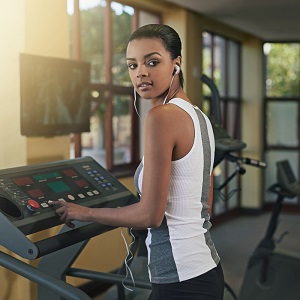 You can make a lot of justifications for not going to the gym or working out for a longer period of time. Instead, why not exercise at home and get to experience the benefits of micro-exercises?
You can make a lot of justifications for not going to the gym or working out for a longer period of time. Instead, why not exercise at home and get to experience the benefits of micro-exercises?
There are many things that can prevent you from receiving the exercise you need, from inclement weather to a lack of motivation.
Lack of time is perhaps the biggest excuse used by people for not exercising as frequently as they ought to.
Most people in our fast-paced world have hectic schedules and hectic lives. How do you find time to work out amongst all of your responsibilities?
The good news is that you don’t always need to work out for an hour in order to notice the benefits of micro-exercises on days when you’re extremely busy. In the end, any kind of exercise has the potential to improve your health.
How Do Micro-Exercises Work?
Micro-exercises are quick workouts designed for people who are often pressed for time but still want to get in more activity throughout their day. Some people begin simply by maximizing the things they accomplish each day.
One of the benefits of micro-exercises is that you sit and answer emails, for example. While you’re finishing up your work, you may squat and reply to emails using voice dictation software on your smartphone.
You can perform some calf raises while serving customers while positioned behind a counter.
You may perform some simple countertop push-ups while you’re cleaning your teeth or doing the dishes at home by gripping the edge of the counter. It can be beneficial to decide to run up the stairs instead of just strolling.
When Time Is Really of the Essence
Find strategies to include exercise in your daily routine if you’re having a lot of trouble finding time in your schedule. You can still find benefits of micro-exercises even if you only do a few.
For extra cardio, chase your dog or youngster around the house or perform some jumping jacks while you’re on the phone.
Just by adding a little extra movement to your regular activities, you can fit in some exercise.
Dance or make additional movements to engage more muscles when using the vacuum.
You can even use a pair of weights on your arms or legs to exert a little additional pressure on your muscles.
Find strategies to fit in high-intensity training during those four or five minutes if you can manage it.
 For example, you could begin with some stair running, then go on to squats, fast push-ups, and a one-minute plank.
For example, you could begin with some stair running, then go on to squats, fast push-ups, and a one-minute plank.
You could complete a sweat-inducing workout in five minutes.
If you want to concentrate on just one activity, think about doing jumping jacks. Jumping jacks are a commonly underutilized exercise that effectively tones a large portion of your body.
If you have time, perform 15 squats and ten jumping jacks, then ten plank shoulder taps.
Taking a plank position with your shoulders over your wrists and your hips, torso, and heels lined up is the first step in a plank shoulder tap.
Holding your hips motionless, tap your right shoulder ten times with your left hand and vice versa.
Try These 3 Micro-Exercises
There are many ways to begin micro-exercises if you’re considering doing so. Here are some worthwhile choices to think about:
- Stairwalk: Locate a flight of stairs consisting of 10 or more steps and ascend and descend them. Increase your pace a little bit each time you walk up and down, and by the end of the program, you should be walking at a fairly fast pace. If you’re comfortable enough, you can also incorporate workouts like lunges at the conclusion of each run.
- Squats: For a 4-minute workout, perform 40 seconds of squats, 20 seconds of break, and then 40 seconds of mountain climbers. After 20 more seconds of rest, perform pushups for 40 seconds, and then relax once again. Make at least two attempts.
- Quick run: Jog for about sixty seconds, then take a fifteen-second break and run at a moderate pace before returning to a light jog. Return to a gentle jog after 15 seconds of increasing your intensity to a full run. Changing up the intensity of your workout might be a great improvement.





